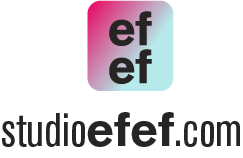Do you really need Adobe Lightroom for food photography editing?
Lightroom has become a bit of an industry standard for photographic post-production. But one almost totally overlooked software, which has actually always been bundled for free with Adobe Photoshop, is almost identical in many ways...
Funnily enough, I only learnt Lightroom when I needed to teach it as part of a photography course quite some time ago. It might come as a surprise, but I had been happily working with Adobe Camera Raw, Adobe Bridge (for file management) and Photoshop for years, and I was comfortable and confident with my workflow, so I never saw the need to explore Lightroom.
I had heard people talk about it a lot, and I was aware that it had become an industry-standard post-production stalwart. I quietly continued with what I was happy with and diligently avoided mentioning the fact that I didn't even own a copy of Lightroom!
Camera RAW version 9.5 interface
But of course, fate intervened and I inevitably had to purchase a copy and learn it, purely to teach. This wasn't a stressful scenario - I knew that learning a software package that inevitably had very similar features to other packages I've used wouldn't take long.
What did surprise me though, was how similar Lightroom is to Adobe Camera RAW - uncannily similar. In fact, I would go so far as to say that Lightroom is like Camera RAWs prettier, slightly more intuitive and infinitely better-marketed sister.
Lightroom version 6 interface
Adobe Camera RAW is actually technically a plug-in for Photoshop as opposed to a standalone software package but that doesn't mean that it's lacking in functionality - far from it. It also works seamlessly with Adobe Bridge (for file management).
Visually it's not as pretty as Lightroom, and a lot of the core functions are not in the most intuitive positions, but once you become accustomed to the interface, you'll find it is extremely similar in functionality to Lightroom.
So in fairness, there is more depth to Lightroom in terms of its ability to compile books, websites, slideshows etc. however if you're just looking for an image editing system, and you've already got Adobe Camera RAW I would feel stretched to convince you to part with the extra cash.
Having said that if you are keen to buy a copy of Lightroom, unless you're already a Cloud convert, buy it now! Adobe is very close to phasing out the last remaining bastion of desktop-based software, in the form of Lightroom Version 6 and if you beg their online support enough they will still give you a link to buy it. (Yes, I am one of those begrudgers that refuse to be tied into a monthly ransom by Adobe, and I'll happily stick with my old desktop versions until they become seriously obsolete!)
Download a FREE chapter of my ebook 'The Ultimate Guide to Natural Light for Food Photography' by adding your details here:
Anyway, I digress. Comparatively Lightroom and Camera RAW have relatively similar interfaces at first glance. Within the image development tools, the big difference is really in the positioning and layout of the key functions. You'll notice in the Lightroom interface there is a small palette of 6 simple icons that I've highlighted with a red rectangle in the image above. Each of these icons leads to a key set of tools, in an intuitive process that makes it pretty easy to find what you need and it almost guides you through a flowing process of colour correcting, dust/blemish removal, and selective tonal alterations etc.
Camera RAW, on the other hand, has splattered the same range of tools over two areas of the interface (also indicated with red rectangles on the image above) over a myriad of random icons. This leaves you with a less flowing process of selecting and using the tools BUT they are all there. As far as I can conclude, pretty much everything you can do with Lightroom you can just as successfully do with Camera RAW. If you happen to know otherwise please don't be shy, share your knowledge below!
If you haven't used Lightroom before and you learn Camera RAW you won't miss the nice flow of intuitively placed icons because you won't know any better. Add to that your pocket will have several more dollars that can be spent on something else.
So in conclusion, if you are considering purchasing Lightroom and you already have a copy of camera RAW my suggestion would be to get familiar with Camera RAW before parting with any further cash. Even if you do decide to purchase Lightroom in the future, anything you learn via Camera RAW will cross-pollinate to Lightroom anyway - so there is really nothing to lose.
Note: if you have a copy of Photoshop you should also either have a copy of Camera RAW or access to you — you just might not realise it.
Want to know THE best lighting angle for food photography that works every time? Download my free cheat sheet by entering your details below:
You might also like:
Hi I'm Fran, a professional photographer and designer based on the Gold Coast in Australia. I’m a lifelong creative, passionate about producing drool-worthy images that provoke emotion and communicate deliciousness. My obsession is teaching others how to achieve the satisfaction of realising their creative vision too. I also love to produce high quality visual books (especially cook books) for my clients.







